Development and Experiment of an Innovative Row-Controlled Device for Residual Film Collector to Drive Autonomously along the Ridge
Abstract
:1. Introduction
2. Materials and Methods
2.1. Working Principle and Design of Key Components
2.1.1. Working Principle
2.1.2. Cotton Growing Patterns and Characteristics
2.1.3. Three-Dimensional Model Design of a Touch-Activated Cotton Row Detection Device
2.1.4. Adams-Based Simulation of the Motion of a Cotton Row Detection Device
2.2. Kinetic Model for Residual Film Collector
2.2.1. Vehicle Steering Models
2.2.2. Pure Pursuit Algorithm
2.3. Simulation of Control Strategies Based on MATLAB/Simulink
2.4. Automatic Alignment Control System Design
2.4.1. Selection of Sensors
2.4.2. Software Architecture of the Control Program
2.5. Field Experiments
3. Results and Discussion
3.1. Analysis of Simulation Data
3.2. Analysis of Field Experiment Data
4. Conclusions
- (1)
- In view of the current situation that the residual film collector mainly relies on manual alignment, an automatic alignment system for the residual film collector based on the combination of a touch control mechanism and an electric steering wheel has been established, and the alignment experiment results demonstrated good path matching with the cotton pole, thereby laying a solid foundation for the development of alignment in the residual film collector.
- (2)
- Based on kinematic models of the touch detection mechanism and the body steering control system, an automatic alignment control system using fuzzy adaptive control was designed and simulated in MATLAB/Simulink for deviation correction under different parameters.
- (3)
- The average deviation of the automatic row alignment was 0.066 m, and the average deviation was within ± 0.1 m, respectively. During the automatic row alignment harvesting process, the deviation of the automatic row alignment gradually increased with increasing harvester speed. To eliminate the speed limitation, further research will focus on developing innovative control strategies to reduce the deviation in the system at high-speed operation.
- (4)
- This study lays the foundation for the automatic running of the residual film collector, but due to limitations in equipment time and other conditions, the braking, speed regulation, and automatic path tracking in the automatic operation system of the residual film collector still need further improvement. For example, there is a close relationship between the effectiveness of the automatic alignment operations and the field environment, and further research is needed on the interaction between the residual film recycling machines, soil, and cotton stems; In addition, the field environment was harsh, and the machine vibration was obvious. Relevant protective devices can be designed to improve the stability of the sensing device, thus ultimately achieving the goal of optimizing the control system. In future research, we will continue to research new row-controlled devices and control strategies to improve the operational efficiency of the residual film collector.
Author Contributions
Funding
Institutional Review Board Statement
Informed Consent Statement
Data Availability Statement
Conflicts of Interest
References
- Yan, P.; Zhang, S.; Wang, J.; Xiao, Z.; Yan, S.; Wang, W.; Aurangzeib, M. Heterogeneity of plastic residue was determined by both mulch film and external plastic pollutants in the farmland of Northeast China. Sci. Total Environ. 2022, 853, 158681. [Google Scholar] [CrossRef] [PubMed]
- Zhang, Z.; Li, J.; Wang, X.; Zhao, Y.; Xue, S.; Su, Z.; Liang, J. Design and test of 1SMB-3600A type fragmented mulch film collector for sowing layer soil. Soil Tillage Res. 2023, 225, 105555. [Google Scholar] [CrossRef]
- Zhang, Z.; Li, J.; Wang, X.; Zhao, Y.; Xue, S.; Su, Z. Parameters Optimization and Test of an Arc-Shaped Nail-Tooth Roller-Type Recovery Machine for Sowing Layer Residual Film. Agriculture 2022, 12, 660. [Google Scholar] [CrossRef]
- Huang, Y.; Fu, J.; Xu, S.; Han, T.; Liu, Y. Research on Integrated Navigation System of Agricultural Machinery Based on RTK-BDS/INS. Agriculture 2022, 12, 1169. [Google Scholar] [CrossRef]
- Li, S.; Zhang, M.; Ji, Y.; Zhang, Z.; Cao, R.; Chen, B.; Li, H.; Yin, Y. Agricultural machinery GNSS/IMU-integrated navigation based on fuzzy adaptive finite impulse response Kalman filtering algorithm. Comput. Electron. Agric. 2021, 191, 106524. [Google Scholar] [CrossRef]
- Zhai, Z.; Zhu, Z.; Du, Y.; Song, Z.; Mao, E. Multi-crop-row detection algorithm based on binocular vision. Biosyst. Eng. 2016, 150, 89–103. [Google Scholar] [CrossRef]
- Gai, J.; Xiang, L.; Tang, L. Using a depth camera for crop row detection and mapping for under-canopy navigation of agricultural robotic vehicle. Comput. Electron. Agric. 2021, 188, 106301. [Google Scholar] [CrossRef]
- Yang, Y.; Zhou, Y.; Yue, X.; Zhang, G.; Wen, X.; Ma, B.; Xu, L.; Chen, L. Real-time detection of crop rows in maize fields based on autonomous extraction of ROI. Expert Syst. Appl. 2023, 213, 118826. [Google Scholar] [CrossRef]
- Zhang, K.; Hu, Y.; Yang, A.L.; Zhang, D.; Cui, T.; Fan, L. Design and Experiment of Auto-follow Row System forCorn Harvester. Trans. Chin. Soc. Agric. Mach. 2020, 51, 12. [Google Scholar] [CrossRef]
- Zhang, J.; Zhang, C.; Zhao, J.; Zhang, R.; Zhao, X.; Li, F. Design and Experiment of Auto-follow Row Devicefor Cotton Topping Machine. Trans. Chin. Soc. Agric. Mach. 2021, 52, 9. [Google Scholar] [CrossRef]
- Li, T.; Zhou, J.; Xu, W.; Zhang, H.; Liu, C.; Jiang, W. Design and Test of Auto-followr Row System Employed in Root and Stem Crops Harvester. Trans. Chin. Soc. Agric. Mach. 2019, 50, 9. [Google Scholar] [CrossRef]
- Zhang, H.; Wang, X.; Hu, L.; Pang, N.; Gui, H.; Dong, Q.; Ruan, K.; Song, M.; Zhang, X. Effects of different machine-harvested cotton planting patterns and planting densities on soil hydrothermal conditions and cotton yield. Trans. Chin. Soc. Agric. Eng. 2020, 36, 39–47. [Google Scholar] [CrossRef]
- Xianglin, B.; Haoyu, L.; Faxian, L. Dynamic simulation of auto-centralizer for horizontal well traction robot based on ADAMS. Pet. Explor. Dev. 2010, 37, 104–110. [Google Scholar] [CrossRef]
- Zhang, H.; Zhang, Y.; Liu, C.; Zhang, Z. Energy efficient path planning for autonomous ground vehicles with ackermann steering. Robot. Auton. Syst. 2023, 162, 104366. [Google Scholar] [CrossRef]
- Yang, Y.; Li, Y.; Wen, X.; Zhang, G.; Ma, Q.; Cheng, S.; Qi, J.; Xu, L.; Chen, L. An optimal goal point determination algorithm for automatic navigation of agricultural machinery: Improving the tracking accuracy of the Pure Pursuit algorithm. Comput. Electron. Agric. 2022, 194, 106760. [Google Scholar] [CrossRef]
- Fernandez, B.; Herrera, P.J.; Cerrada, J.A. A simplified optimal path following controller for an agricultural skid-steering robot. IEEE Access 2019, 7, 95932–95940. [Google Scholar] [CrossRef]
- Zhang, W.; Gai, J.; Zhang, Z.; Tang, L.; Liao, Q.; Ding, Y. Double-DQN based path smoothing and tracking control method for robotic vehicle navigation. Comput. Electron. Agric. 2019, 166, 104985. [Google Scholar] [CrossRef]
- Najariyan, M.; Zhao, Y. Granular fuzzy PID controller. Expert Syst. Appl. 2021, 167, 114182. [Google Scholar] [CrossRef]
- You, B.; Yue, Y.; Sun, M.; Li, J.; Jia, D. Design of a real-time salinity detection system for water injection wells based on fuzzy control. Sensors 2021, 21, 3086. [Google Scholar] [CrossRef] [PubMed]
- Pomerleau, D.A. Neural Network Perception for Mobile Robot Guidance; Springer Science & Business Media: Berlin/Heidelberg, Germany, 2012. [Google Scholar]
- Liu, W.; Li, F.; Wan, Y.; Jing, C.; Wang, X.; Helali, M. Design of manipulator based on two-dimensional force feedback. Intell. Serv. Robot. 2020, 16, 243. [Google Scholar] [CrossRef]
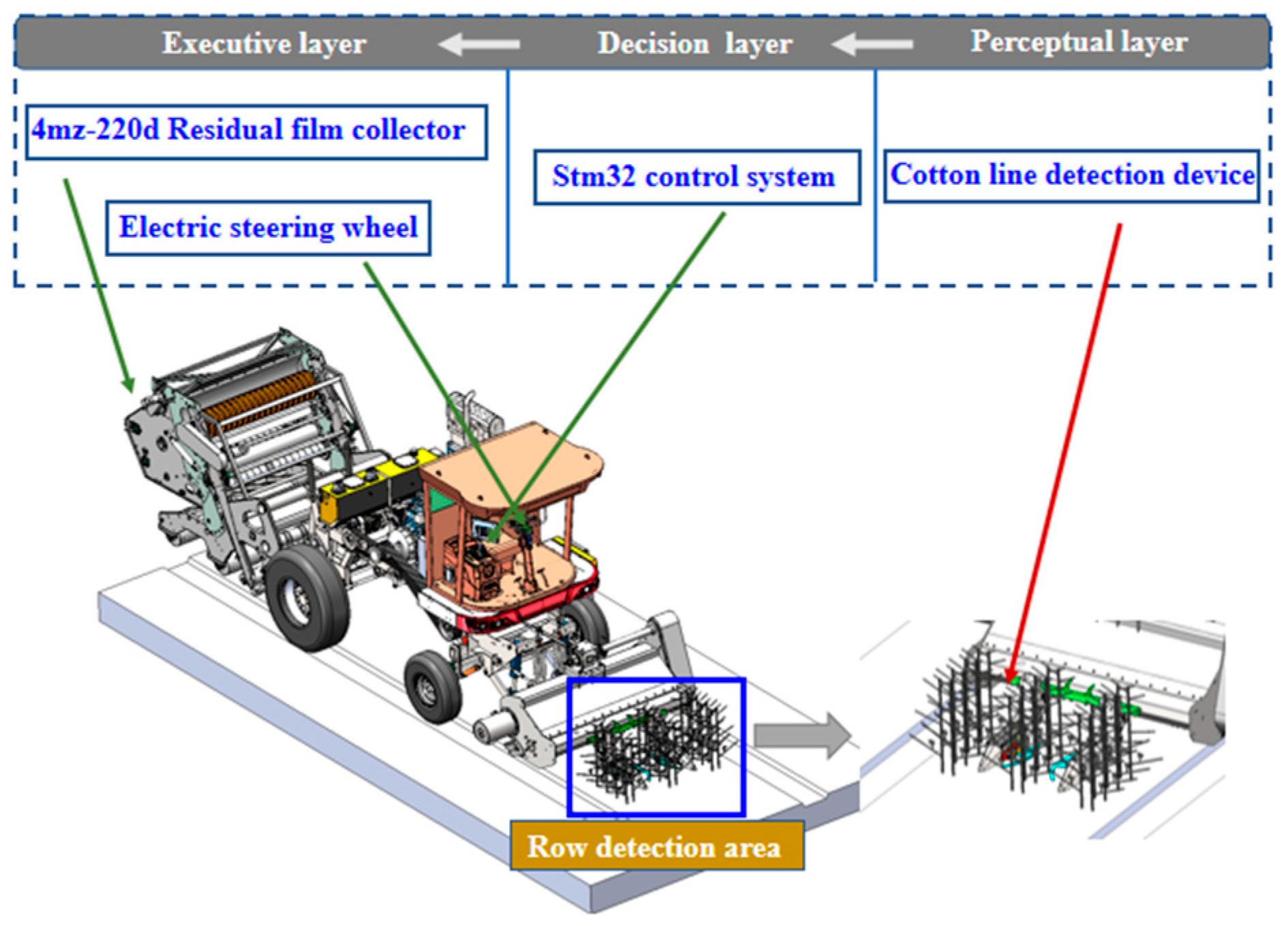
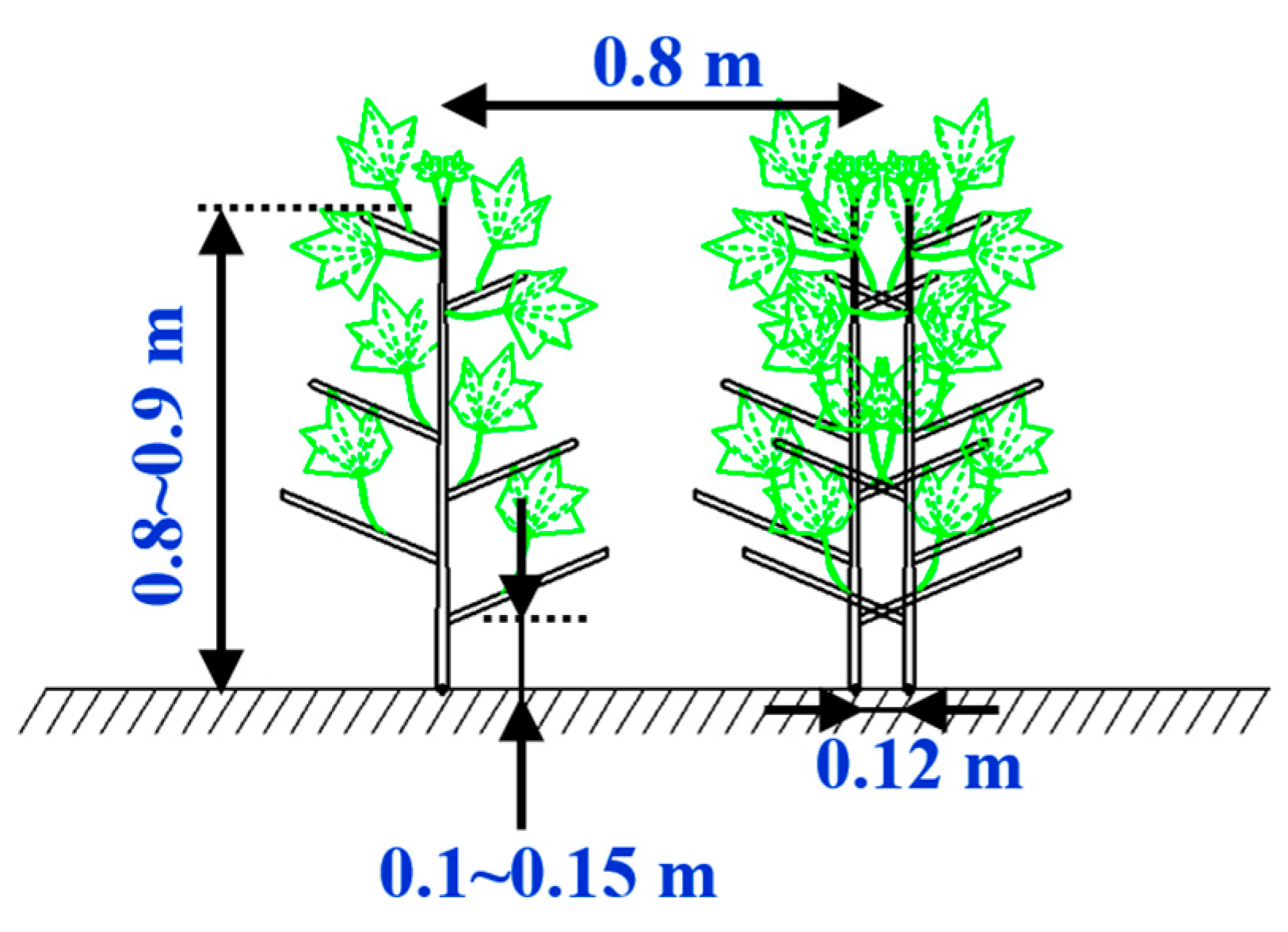
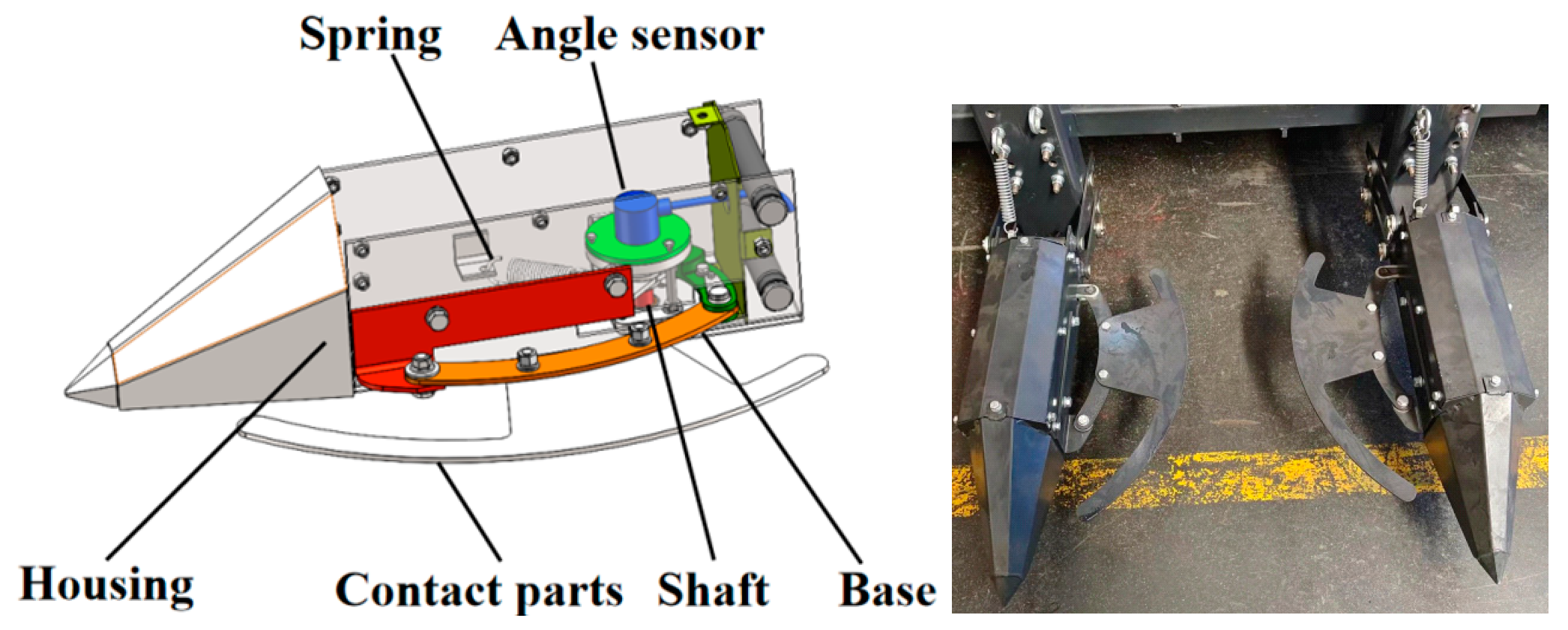

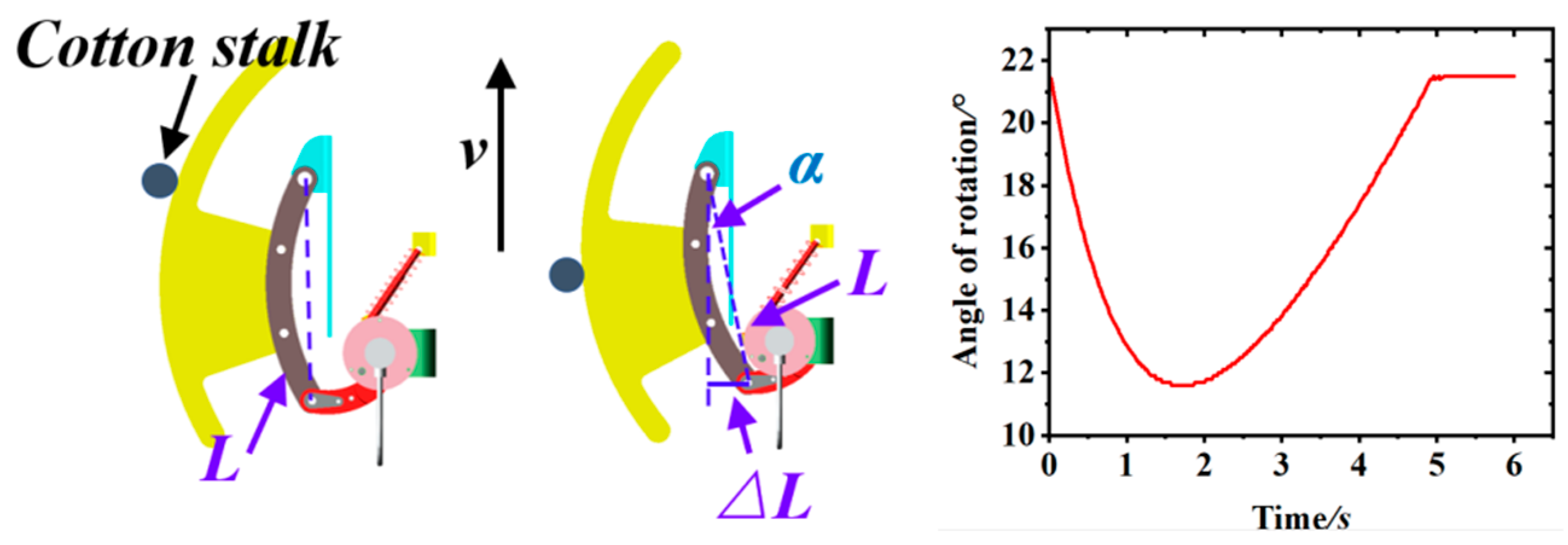
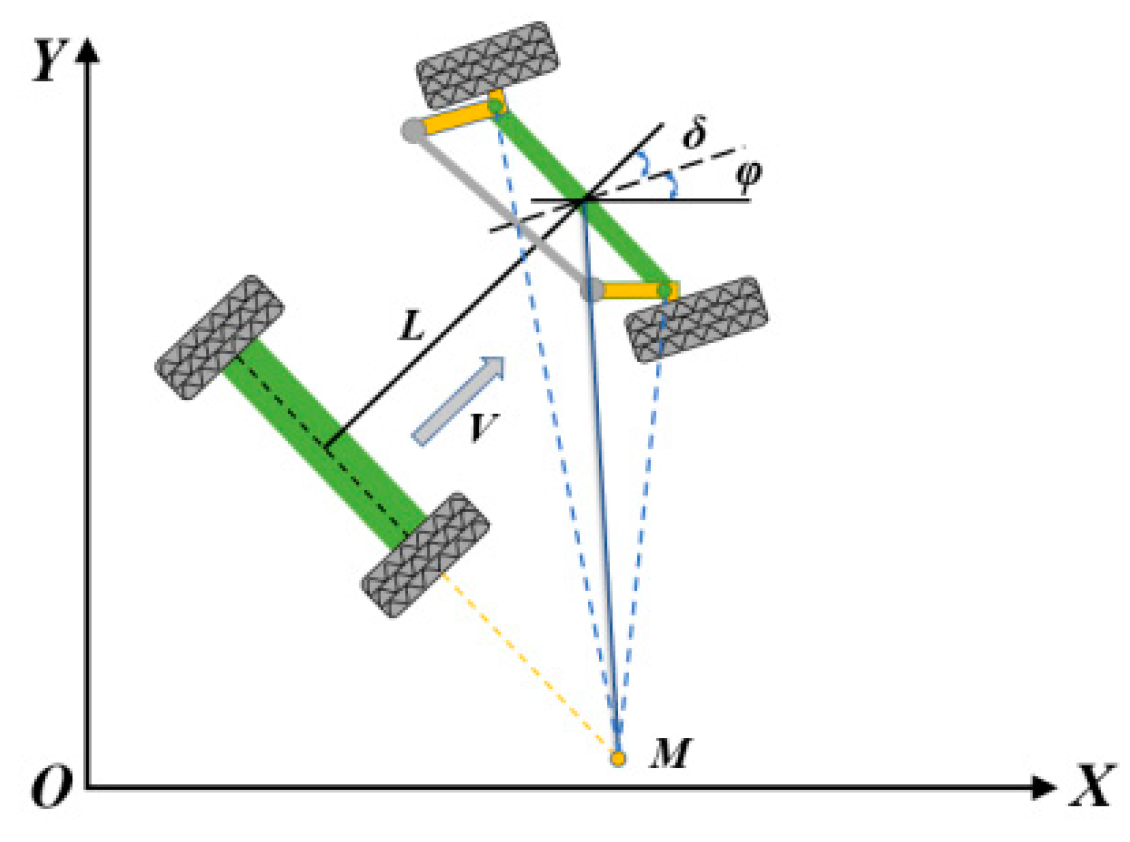
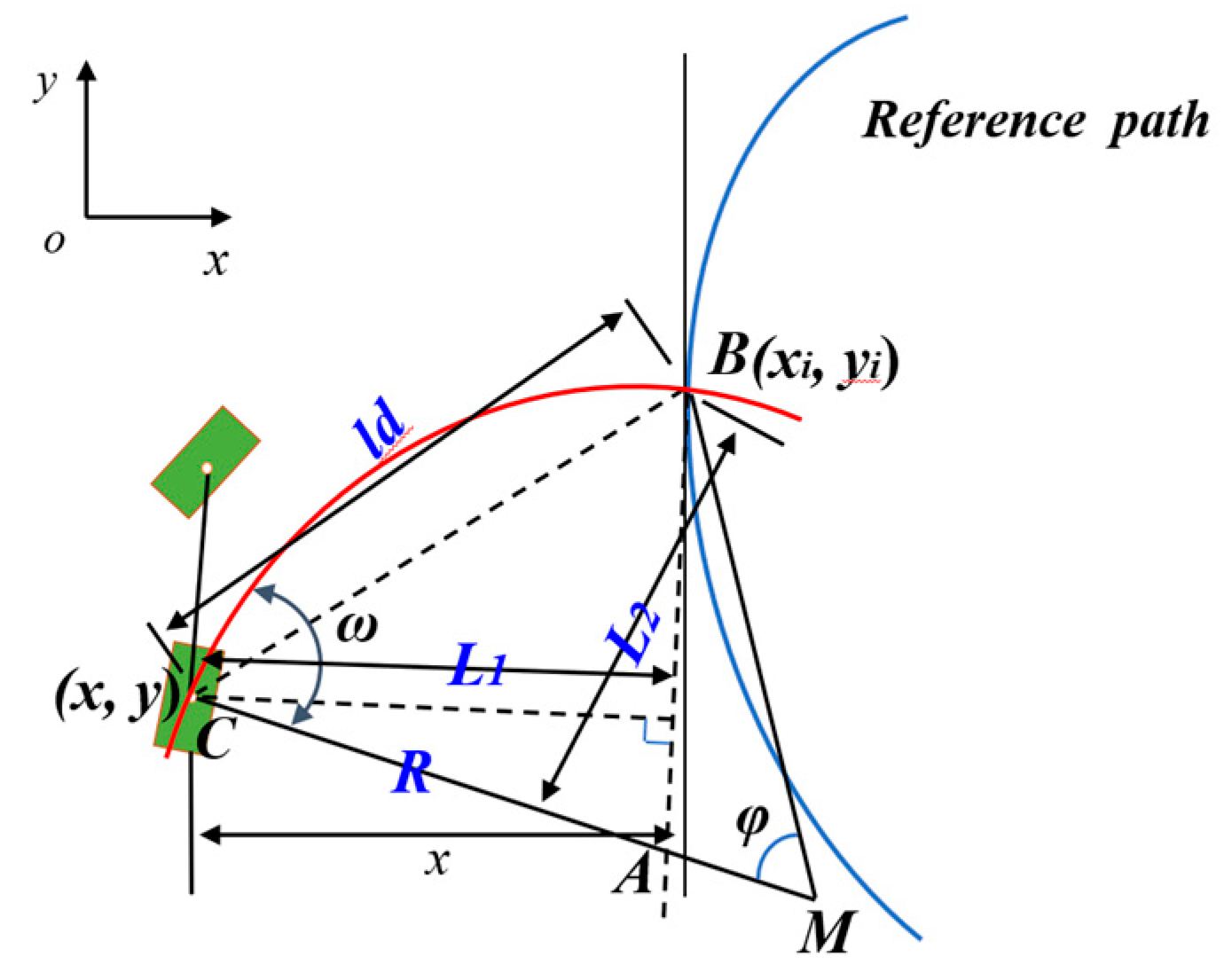



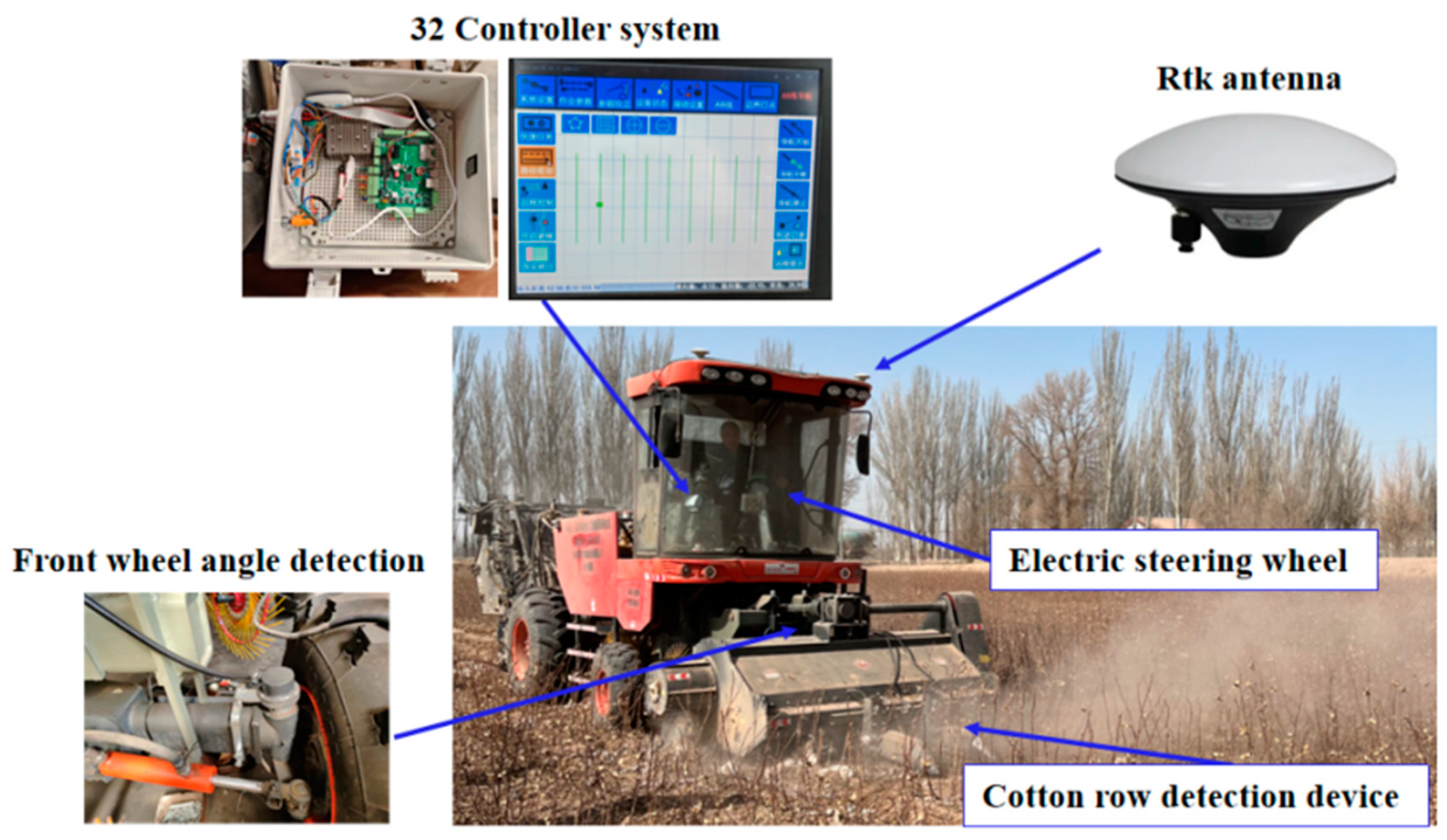


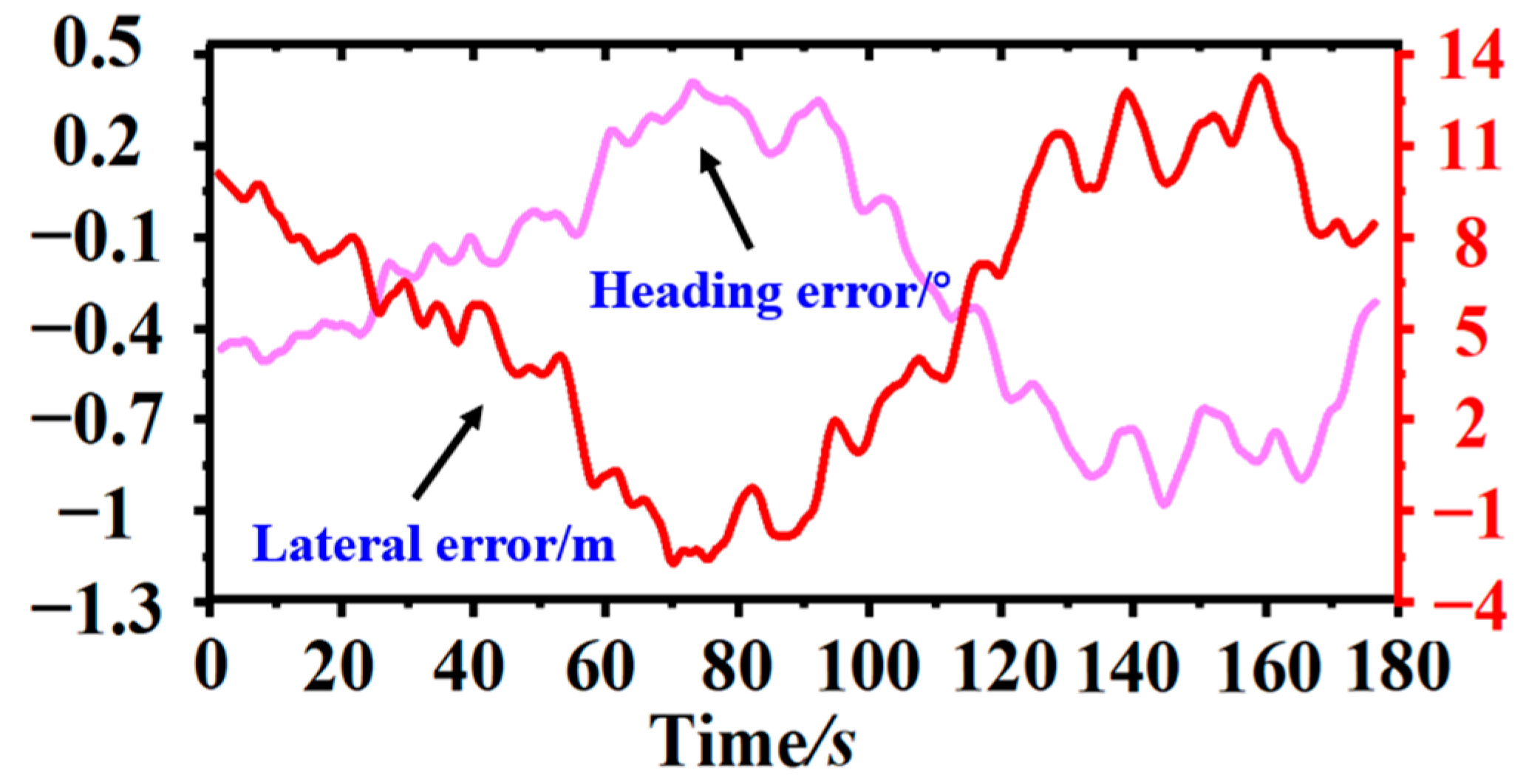
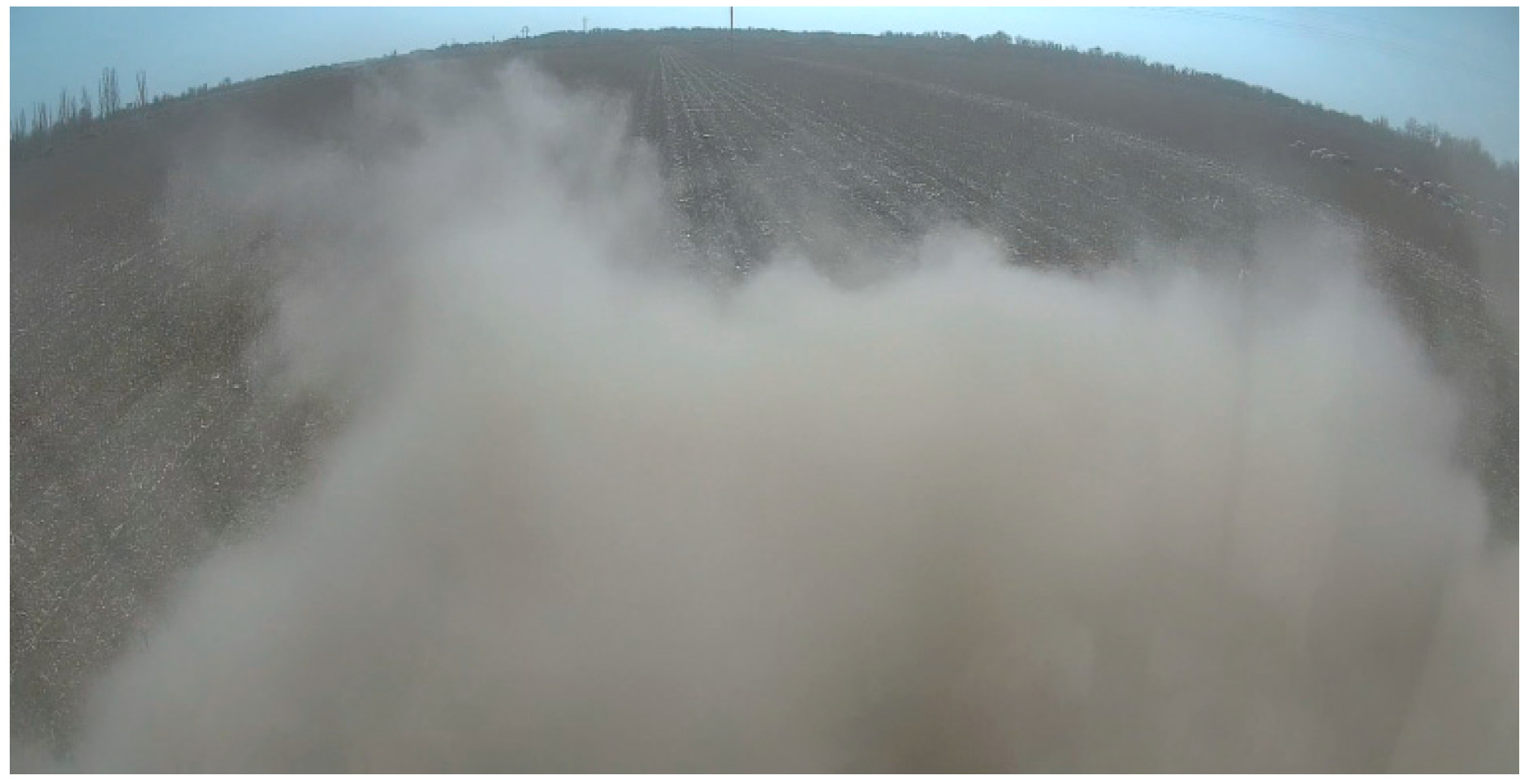
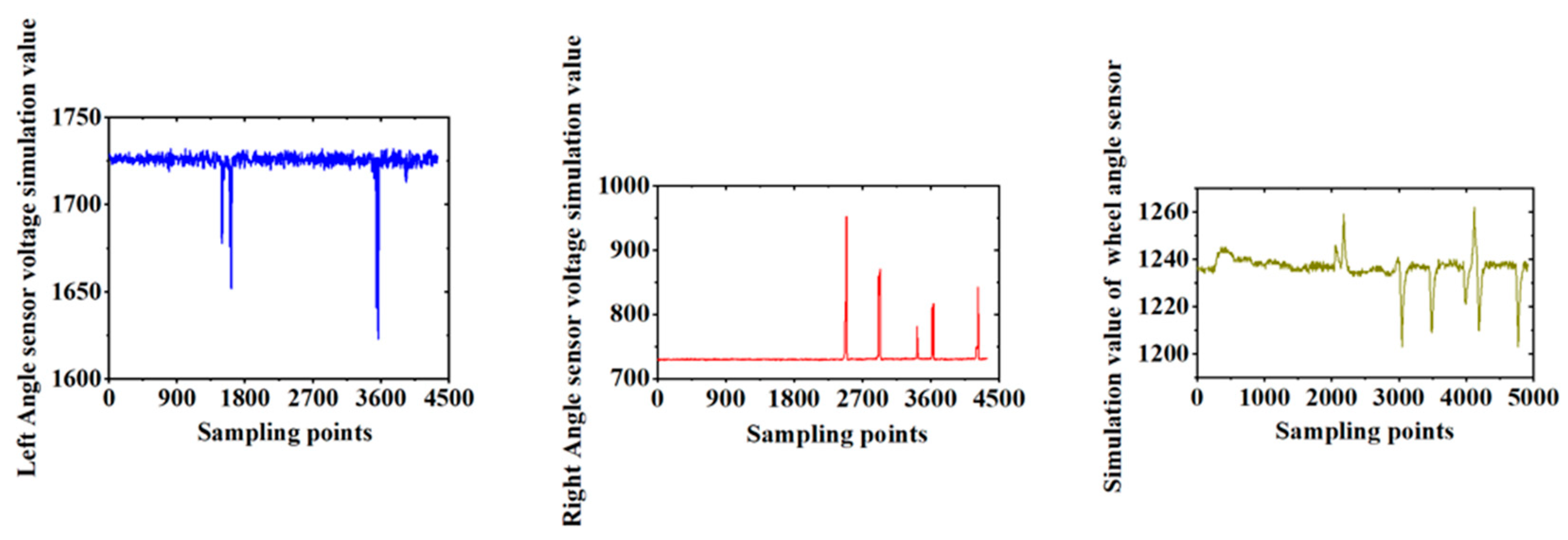
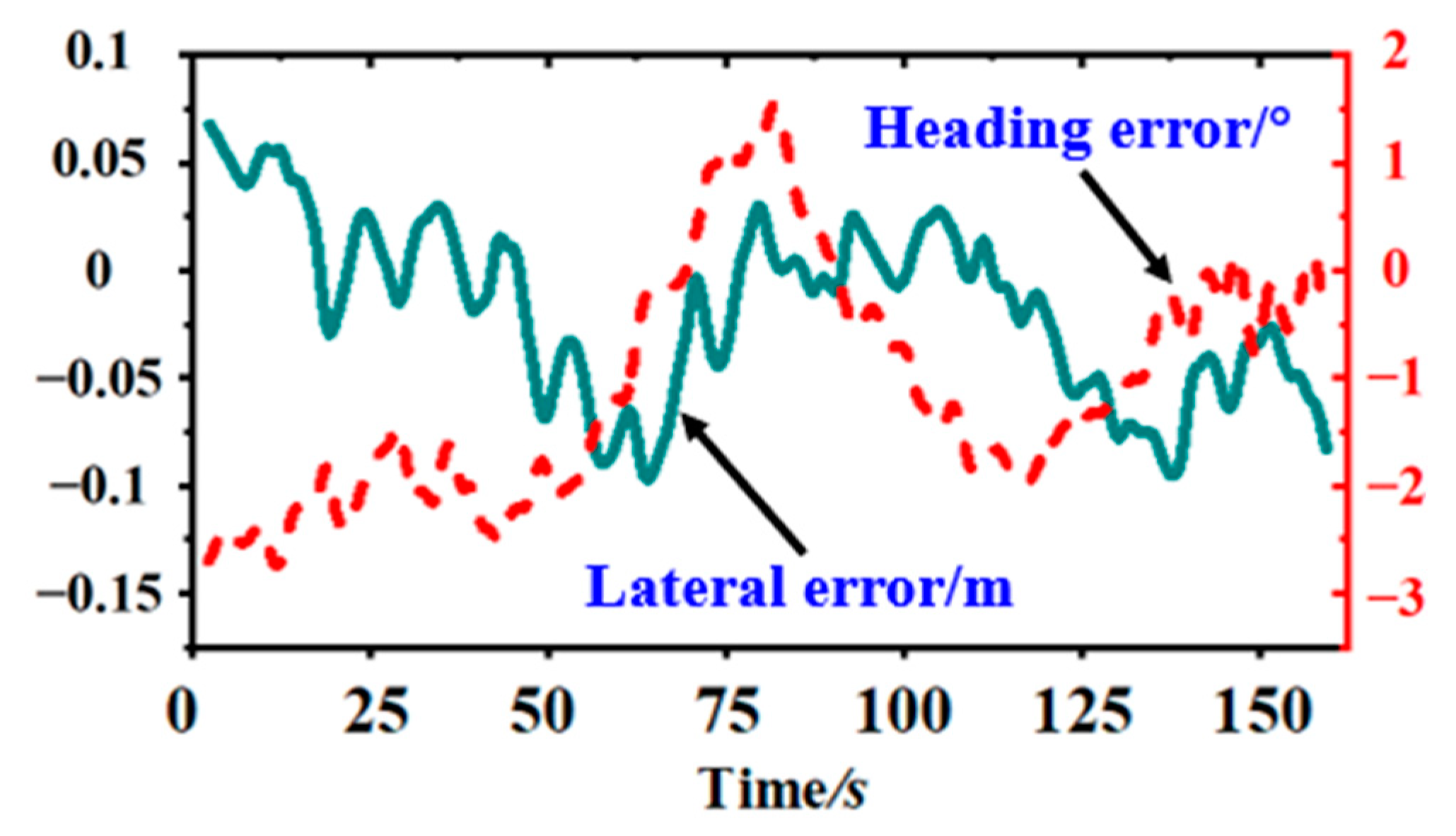
| ld | Te | |||||||
|---|---|---|---|---|---|---|---|---|
| θe | NB | NM | NS | ZO | PS | PM | PB | |
| NB | NB | NB | NB | NB | NM | NM | NB | |
| NM | NB | NB | NM | NM | NS | NS | NB | |
| NS | NB | NM | NM | NS | ZO | NS | NM | |
| ZO | NM | NM | NS | ZO | PS | ZO | NM | |
| PS | NM | NS | ZO | PS | PS | PM | NS | |
| PM | NS | ZO | PS | PS | PM | PM | ZO | |
| PB | ZO | PS | PM | PM | PM | PB | PM | |
| Number | Forward Speed (m/s) | Average Deviation/m | Automatic Alignment of Line Track and Cotton Line Deviation | |
|---|---|---|---|---|
| Manual Alignment | Automatic Alignment | Percentage of Deviations within ±0.1 m (%) | ||
| 1 | 0.64 | 0.083 | 0.026 | 98.6 |
| 2 | 0.64 | 0.095 | 0.031 | 97.8 |
| 3 | 0.86 | 0.115 | 0.052 | 96.3 |
| 4 | 0.86 | 0.132 | 0.064 | 97.4 |
| 5 | 1.17 | 0.168 | 0.077 | 94.7 |
| 6 | 1.17 | 0.174 | 0.085 | 95.3 |
| 7 | 1.37 | 0.186 | 0.094 | 93.7 |
| 8 | 1.37 | 0.204 | 0.097 | 91.9 |
| Average | 0.144 | 0.066 | 95.7 | |
Disclaimer/Publisher’s Note: The statements, opinions and data contained in all publications are solely those of the individual author(s) and contributor(s) and not of MDPI and/or the editor(s). MDPI and/or the editor(s) disclaim responsibility for any injury to people or property resulting from any ideas, methods, instructions or products referred to in the content. |
© 2023 by the authors. Licensee MDPI, Basel, Switzerland. This article is an open access article distributed under the terms and conditions of the Creative Commons Attribution (CC BY) license (https://creativecommons.org/licenses/by/4.0/).
Share and Cite
Chen, Z.; Yin, J.; Yang, J.; Zhou, M.; Wang, X.; Farhan, S.M. Development and Experiment of an Innovative Row-Controlled Device for Residual Film Collector to Drive Autonomously along the Ridge. Sensors 2023, 23, 8484. https://doi.org/10.3390/s23208484
Chen Z, Yin J, Yang J, Zhou M, Wang X, Farhan SM. Development and Experiment of an Innovative Row-Controlled Device for Residual Film Collector to Drive Autonomously along the Ridge. Sensors. 2023; 23(20):8484. https://doi.org/10.3390/s23208484
Chicago/Turabian StyleChen, Zhijian, Jianjun Yin, Jiaxin Yang, Maile Zhou, Xinzhong Wang, and Sheikh Muhammad Farhan. 2023. "Development and Experiment of an Innovative Row-Controlled Device for Residual Film Collector to Drive Autonomously along the Ridge" Sensors 23, no. 20: 8484. https://doi.org/10.3390/s23208484
APA StyleChen, Z., Yin, J., Yang, J., Zhou, M., Wang, X., & Farhan, S. M. (2023). Development and Experiment of an Innovative Row-Controlled Device for Residual Film Collector to Drive Autonomously along the Ridge. Sensors, 23(20), 8484. https://doi.org/10.3390/s23208484







